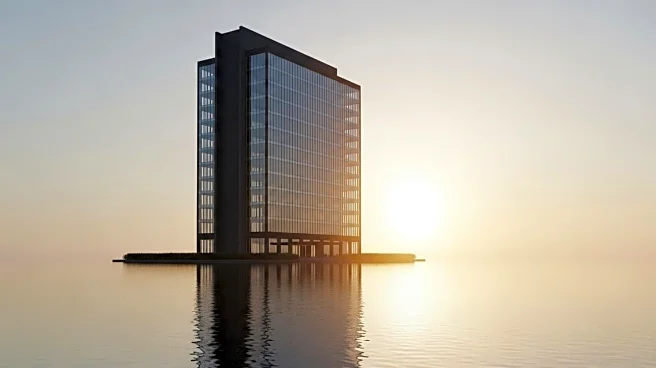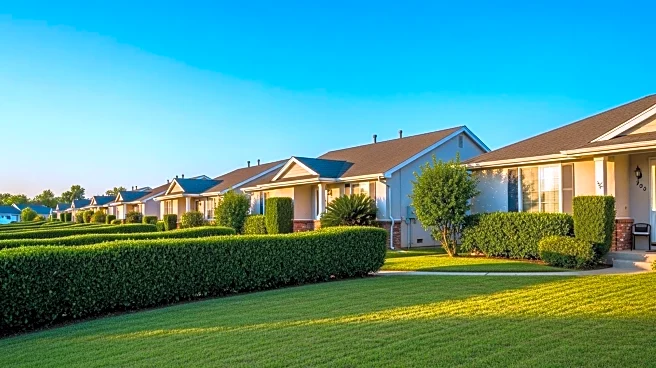What is the story about?
What's Happening?
JLL, a global commercial real estate and investment management company, has reported a significant increase in office investor demand during the first half of 2025. According to exclusive data provided to Property Play, office sales transactions saw a 110% increase compared to the first half of 2024, with total industry volume rising 42% year over year to $25.9 billion. This surge is attributed to lower interest rates, which have encouraged a transition from 'office curious' to 'office serious' among investors. The report highlights a growing appetite for high-quality office spaces, with larger deals exceeding $100 million becoming more common. Despite the recovery, the market faces challenges such as limited new office space construction and a reduction in overall office inventory.
Why It's Important?
The resurgence in office investor demand is a critical indicator of recovery in the U.S. office market, which had been severely impacted by the pandemic. This trend suggests a stabilization in company downsizing rates and a renewed interest in office spaces, potentially leading to increased leasing metrics and valuations. The shift towards high-quality office buildings could drive competition and rental rates, benefiting institutional investors and REITs. However, the limited construction of new office spaces may constrain future growth, while economic weaknesses could pose challenges for tenant demand. The evolving dynamics in the office market are likely to influence investment strategies and capital flows in the real estate sector.
What's Next?
Looking ahead, institutional capital is expected to play a leading role in the office market recovery. As interest rates remain low, the cost of debt for dealmaking will be favorable, potentially boosting leasing metrics and valuations. However, the broader economic environment, including geopolitical risks and macroeconomic factors, will continue to impact tenant demand and capital market conditions. The market may see increased demand for second-tier office buildings as top-tier spaces fill up, and distressed properties may attract bargain hunters seeking opportunistic returns. The office market's trajectory will depend on balancing these factors and adapting to changing investor and tenant needs.
Beyond the Headlines
The office market's recovery is not just about financial metrics; it also involves a cultural shift in how companies view office spaces post-pandemic. The transition from remote work to hybrid models has altered the demand for office environments, emphasizing flexibility and quality. Additionally, the conversion of older office buildings into residential or hospitality spaces reflects broader urban development trends. These changes highlight the need for adaptive strategies in real estate investment and urban planning, as stakeholders navigate the evolving landscape of work and living spaces.
AI Generated Content
Do you find this article useful?













